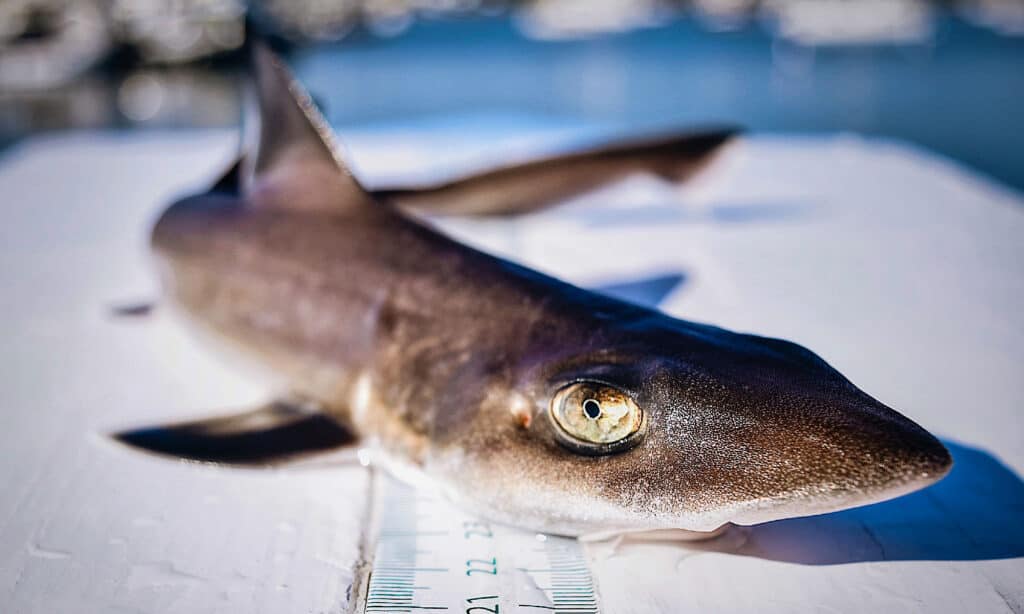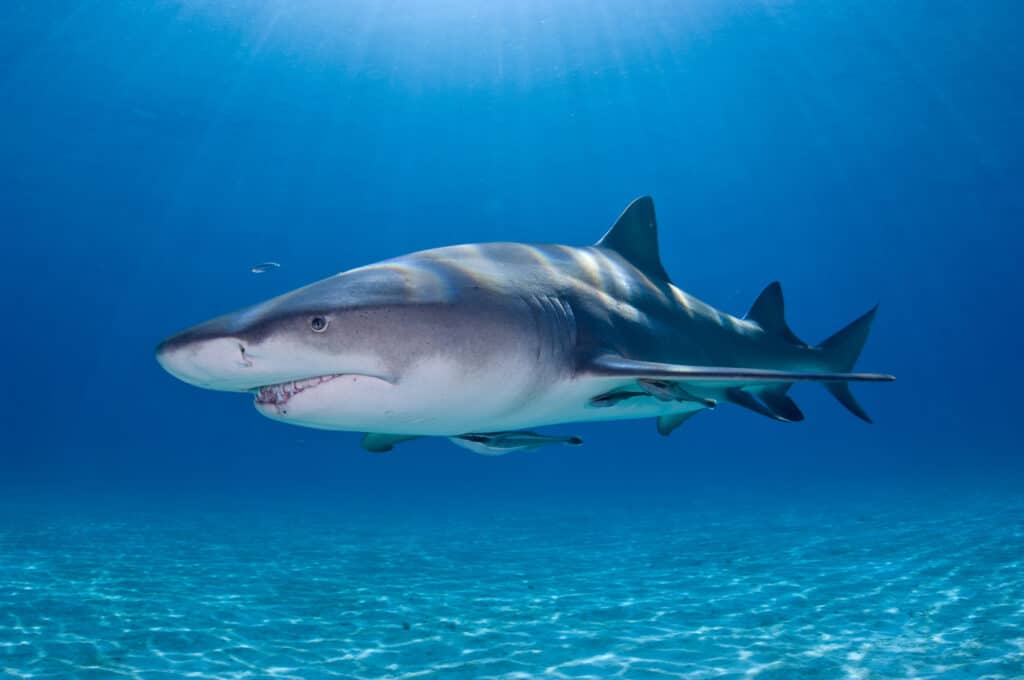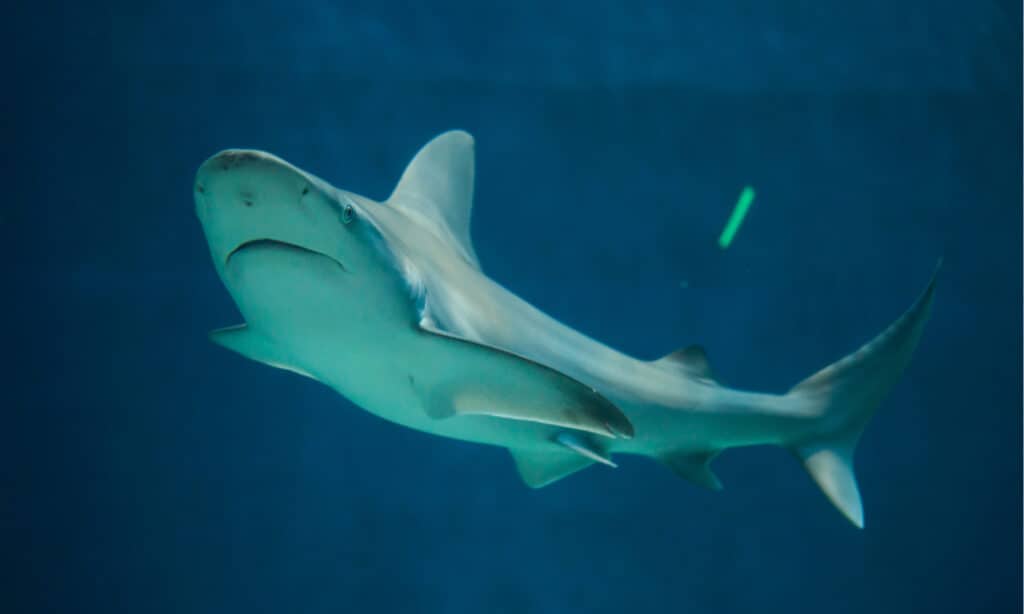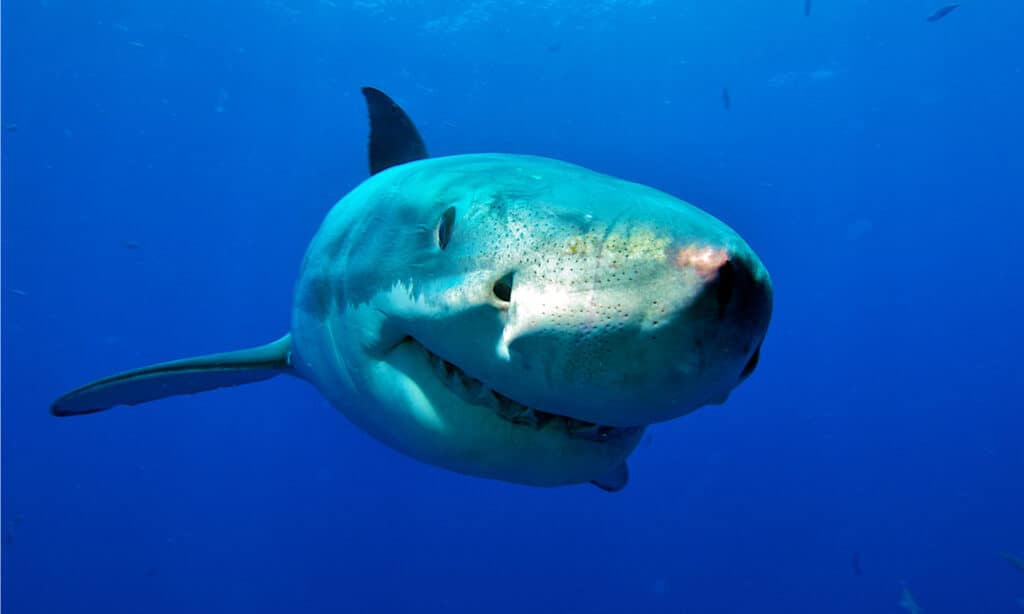If you think about sharks in the Atlantic Ocean, certain popular summer blockbuster movies probably come to mind. But, in truth, there are many species of sharks prowling the East Coast of the United States. In fact, there are many. Some live in the deep ocean, only coming to shore occasionally, and others spend their entire lives within a few miles of land. A few are considered threats to humans that enter the water, just as wolves as threats to humans that hike the backcountry, but most are harmless.
Take a look at six of the most common sharks in the Atlantic Ocean. This list is not comprehensive, but it does give you a nice snapshot of what types of sharks live in the waters of the Atlantic.
1. Spinner Shark

Spinner sharks are known for their speedy, graceful swimming and agile hunting maneuvers.
©Bram Nieuwenhuis/Shutterstock.com
Spinner sharks in the Atlantic Ocean grow up to 9.5 feet long. They have small dorsal fins and long tailfins. Their bodies are thick around the middle and thin towards the tail, with long, narrow, squarish noses. They’re known for spinning their entire bodies through and out of the water as they hunt, hence their name.
Spinner sharks primarily eat bony fish, like mackerel, herring, and young tuna. They also hunt cephalopods, like squid, octopus, and nautilus. Like many sharks, their numbers have decreased drastically in past decades. Today, spinner sharks are listed as Vulnerable to extinction.
2. Smooth Dogfish

Also known as dusky smooth-hounds, smooth dogfish present no threat to humans.
©Rafeed Hussain/Shutterstock.com
Smooth dogfish are small sharks that top out at around five feet long and have flattened, streamlined bodies. Relative to other sharks, like tiger sharks and mako sharks, smooth dogfish have flattened teeth. These are used to crush the hard crustaceans and molluscs they feed on.
Smooth dogfish have rather smooth teeth and small mouths, which means they don’t pose a threat to humans. However, they’re often hauled in on longlines or in trawling nets as bycatch by fishermen fishing for other types of fish. Because of this, their population is considered Near Threatened.
3. Lemon Shark

Lemon sharks frequently swim in schools.
©iStock.com/uwimages
Lemon sharks in the Atlantic Ocean grow up to 11 feet long. They have gray to gray-brown bodies, with pale underbellies and large pectoral fins. These sharks hunt mostly at night, though they are known to actively hunt in the daytime. Despite their size, they’re not considered dangerous to humans and are a favorite of divers and shark tourists.
Lemon sharks have large, narrow, needle-like teeth designed to catch and hold slippery fish. They also eat crustaceans and cephalopods, as well as other sharks. Due to decreasing numbers worldwide, lemon sharks are now listed as Vulnerable to extinction. Their primary threats, like those of most sharks, are overfishing, pollution, and the shark fin soup industry.
4. Sandbar Shark

Sandbar sharks have large dorsal fins and live exclusively in tropical and subtropical coastal waters.
©Vladimir Wrangel/Shutterstock.com
Sandbar sharks in the Atlantic Ocean have extremely large dorsal fins. It’s one of their most distinguishing features, along with their torpedo-shaped bodies and long tail fins. They’re requiem sharks, like bull sharks, grey reef sharks, and tiger sharks. Despite their fearsome appearance, these sharks pose no danger to humans.
Sandbar sharks grow up to 13 feet long and primarily eat fish, cephalopods, and other sharks. As their name suggests, they stick mostly to nearshore areas and frequent sandbars.
5. Atlantic Blacktip

Atlantic blacktips grow up to five feet long and sport black tips on each of their fins.
©Longjourneys/Shutterstock.com
One of the best-known sharks in the Atlantic Ocean is the Atlantic blacktip. Atlantic blacktips grow up to five feet long and sport black tips on each of their fins. They’re famous for their swift, graceful hunting. These sharks live only in shallow, coastal waters.
Atlantic blacktips may look fierce, but they pose no threat to humans. They are, however, known to take bait fish from spearfishers and occasionally cause human injury when doing so.
6. Great White Shark

Great white sharks are both apex predators and keystone species.
©Stefan Pircher/Shutterstock.com
Great white sharks in the Atlantic Ocean grow to mammoth proportions; some reach 20 feet long and weigh nearly 5,000 pounds. One shark conservation organization, OCEARCH, even tracks a handful of great whites living off the East Coast of the United States. Great white sharks are light gray from the midpoint of their sides up and over their back. Their bottom half is white, and they have very large fins. These, coupled with their tooth-baring underbite and torpedo-like shape, make them one of the most impressive fish in our oceans.
Great white sharks are both apex predators and keystone species. They hunt large fish and sea mammals, like seals and sea lions. Unfortunately, they’re the species most likely to bite a human. Bites are almost always a case of mistaken identity. Overall, global populations of great white sharks have declined dramatically.
Staying Safe Around Sharks
Shark safety starts with education. Before you go into the ocean, educate yourself on what types of sharks live in the area you’re visiting. Be sure to stay away from places where people are actively fishing, as well as oceanic drop-off zones. Never swim alone, and avoid wearing shiny jewelry or bright, contrasting colors in the water.
Up Next…
The photo featured at the top of this post is © Yann hubert/Shutterstock.com
Thank you for reading! Have some feedback for us? Contact the AZ Animals editorial team.






